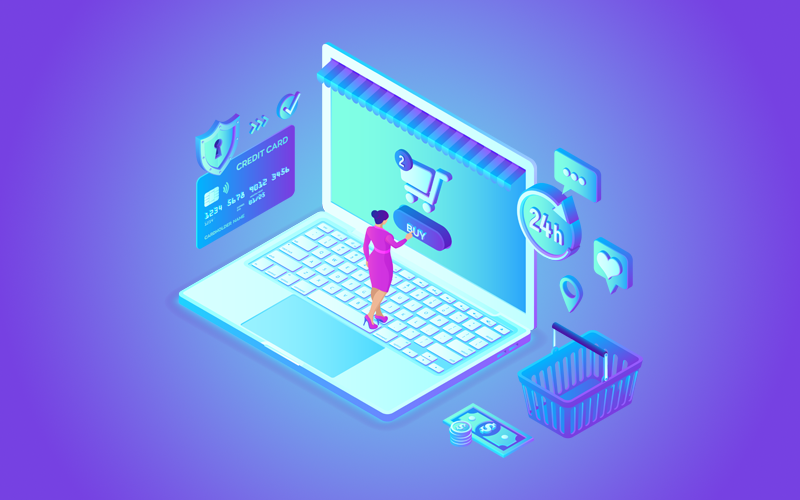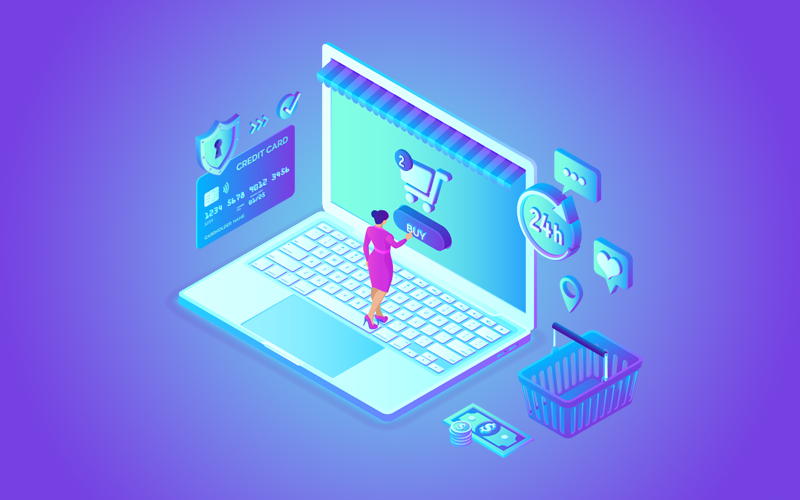Home » Blog » E-Commerce » A Comprehensive Guide to E-Commerce Software Development
A Comprehensive Guide to E-Commerce Software Development

Do you know that you can predict individual customers’ preferences and buying patterns now? With advanced e-commerce software development, you can not only personalize user experience but also optimize product recommendations according to their personal preferences. Artificial intelligence and machine learning technologies are revolutionizing the dynamics of e-commerce. A decent online presence is not only important to enhance user engagement but it also plays a vital role in boosting online sales. E-commerce websites are basically digital storefronts now that open the door to limitless business opportunities. Providing a seamless online shopping experience is becoming extremely important for e-commerce businesses to thrive in the competitive online market. This trend stresses the development of user-friendly and responsive websites. We will discuss each step of e-commerce development in this comprehensive guide.
Step-By-Step Guide to E-Commerce Software Development
Creating and maintaining a solid online presence is the primary requirement of establishing a business in modern times. This translates into the building of a dedicated website outlining the business profile and products and services with suitable detail. After the e-commerce website development, it needs to be properly maintained and updated according to the user requirements. Considering the importance of e-commerce websites, we will delve into the step-by-step guide to software development for e-commerce.
Identify Business Requirements and Plan
The first step in starting any project is understanding the project requirements. Conduct a comprehensive demographic analysis for your prospects. Study their behavior and identify their preferences. Define business goals at an earlier stage to harmonize your efforts to business growth. Arrange the product catalog. Structure product descriptions, HD images, and specifications. List out your unique selling points to create a unique brand identity.
Choosing the Right E-commerce Software
The choice of e-commerce software plays a pivotal role in propelling your business towards success. Evaluate the available software solutions, analyze them for your requirements, and choose the right development platform accordingly.
Open-Source vs. Commercial Platforms
There are open-source as well as commercial development platforms. Based on your project specifics, you can choose the development platform. The open-source e-commerce websites are easily customizable due to access to the source code. The developers can modify the website according to the business requirements. However, some advanced features may not be available in the open source platforms. Magento and WooCommerce are examples of open-source platforms. Then there are commercial solutions like Shopify. The commercial platforms generally have a more user-friendly interface. These platforms are backed by solid support and allow the integration of advanced features.
Some Popular E-Commerce Platforms
| Magento | WooCommerce | Shopify |
| Robust features and scalable | WordPress plugin | No hosting management requirements |
| Extensively customizable | User-friendly | Supports quick setup |
| Require proper technical expertise for integration and development | Seamlessly integrates with existing WordPress websites | Limited customization options |
| Caters for complex business requirements | Simple and efficient interface | Easy-to-use interface |
| Suitable for large enterprises | Good option for small businesses | Appropriate for businesses with simpler requirements. |
Development and Design Phase
The ideas and concepts are brought to life in this stage. Therefore, the development and design phase is considered one of the most important phases.
i) Wireframing – In this process, a basic structure of the website interface is created. It is primarily a skeletal structure in which you define the basic layout and alignment of elements on the screen.
ii) Prototyping – An elementary sketch of the website is designed in prototyping to find any potential bugs in the early stage. Prototypes are typically made for the stakeholders to view the essential working of the website.
iii) UX/UI Design – User experience is at the core of an e-commerce website design. From navigation to graphics and user journey to experience, everything is considered in this part.
iv) Frontend and Backend Development – Frontend developers implement web designs according to the user requirements and ensure that the website is responsive, interactive, and visually appealing. At the same time, the backend developers are responsible for the functional part of the website. It includes database setting, user accounts management, transaction processing, and data storage.
v) Mobile Responsiveness – Most of the users are now on mobiles. Therefore, it’s important to ensure the mobile responsiveness of your website to stay ahead of the competition. The website should adapt and resize according to the screen size and resolution.
Database Design and Security
Customers’ information, your product listings, and transaction data is available on your website. Therefore, it’s important to implement proper security strategies to ensure data safety. Use normalization techniques for product and user databases structuring. Create table relationships to order data and maintain data integrity. Employ data storage and archival practices are used to prevent data loss. For sensitive data, use encryption techniques. Implement strict access control measures and conduct regular audits to identify security issues.
Testing, Deployment, and Optimization
The final phase of e-commerce development includes comprehensive testing across different platforms, website optimization, and deployment. Verify and evaluate the functional value of all the features through extensive testing across different devices and platforms. Include security testing to identify website vulnerabilities. Plan the deployment process to ensure a smooth transition from the development environment to the live production environment. After deployment, carefully assess and monitor the website to identify any issues. Website optimization and enhancement is a continuous process. Formulate and implement search engine optimization techniques to enhance website visibility and ranking. Integrate new updates in the website according to the ongoing trends.
Read more our blog: How Partnering With An IT Services Company?
Lead the E-Commerce Software Development Domain With Suave Solutions!
A dedicated website is extremely important for businesses to stay relevant in this digital era. Outperforming in this area can do wonders for your business growth. Consider integrating the expertise of Suave Solutions to create the right online business persona. Our team is proficient in providing customized e-commerce development services. Start your e-commerce venture with us today!
Recent Posts
- How To Hire Software Developers For Your Startup June 27, 2025
- How UI/UX Design Can Make or Break Your Startup May 21, 2025
- Best Places to Outsource Software Development Around the World April 23, 2025
- Artificial Intelligence Outsourcing in 2025 – Best Practices, Cost, and Benefits March 28, 2025
- Scrum Master vs Project Manager: Choosing the Right Leader for Your Project Success March 3, 2025
Categories
- Business Solutions (8)
- Digital Marketing (2)
- E-Commerce (3)
- Mobile App (11)
- Software Developers (17)
- Software Teams (12)
- Team Outsourcing (12)
- Tech Trends (6)
- UI UX Design (4)
- Web Development (8)

